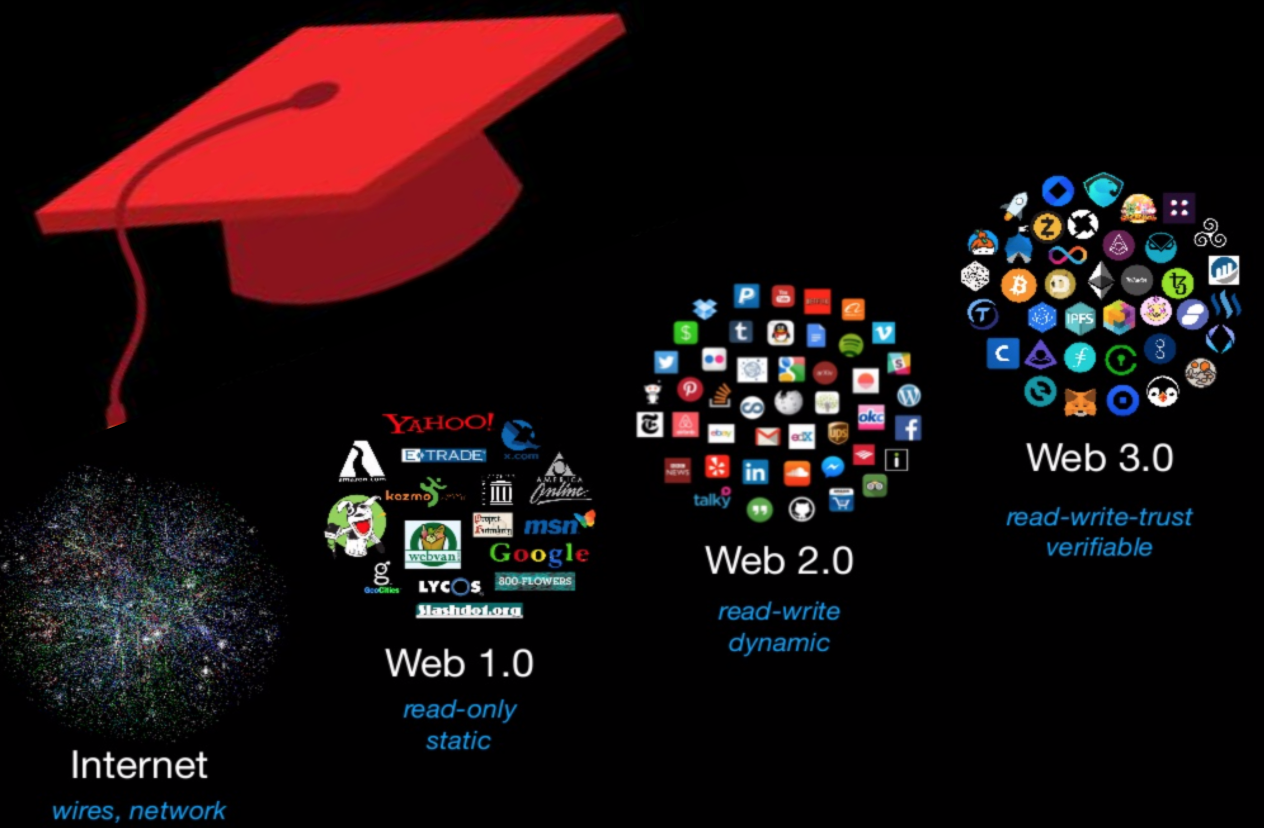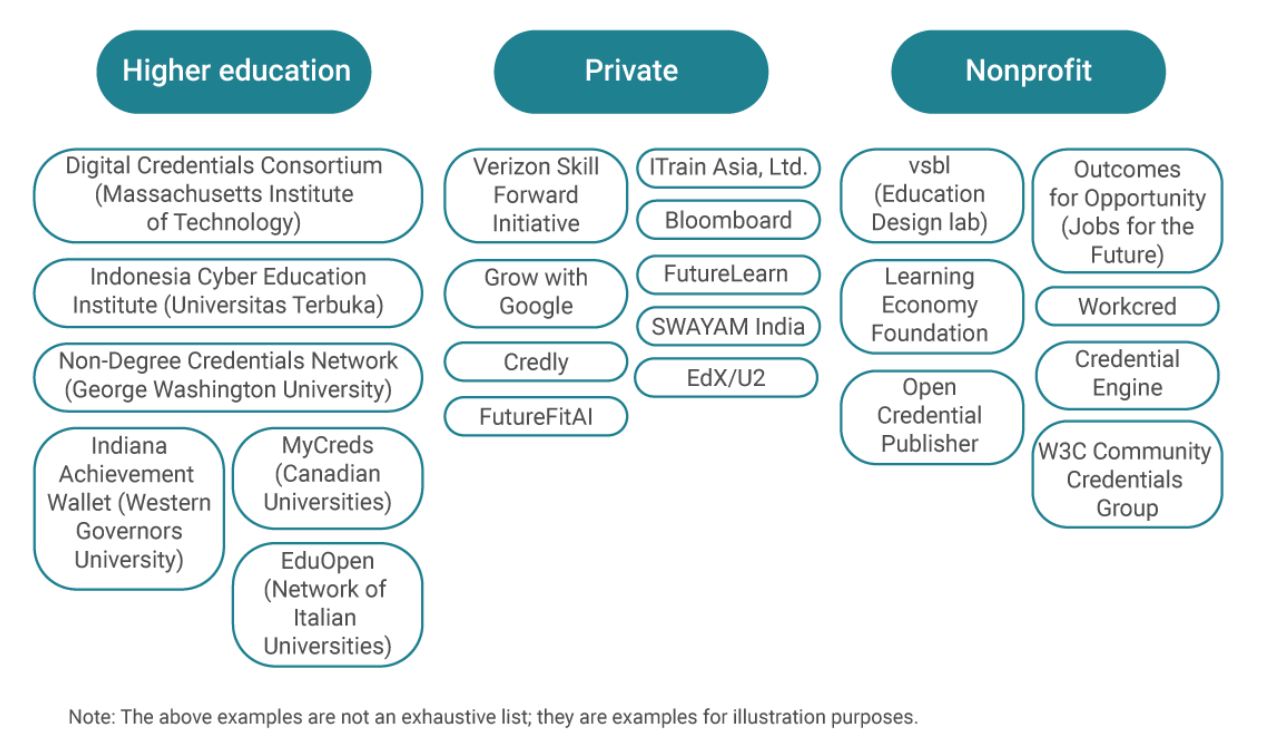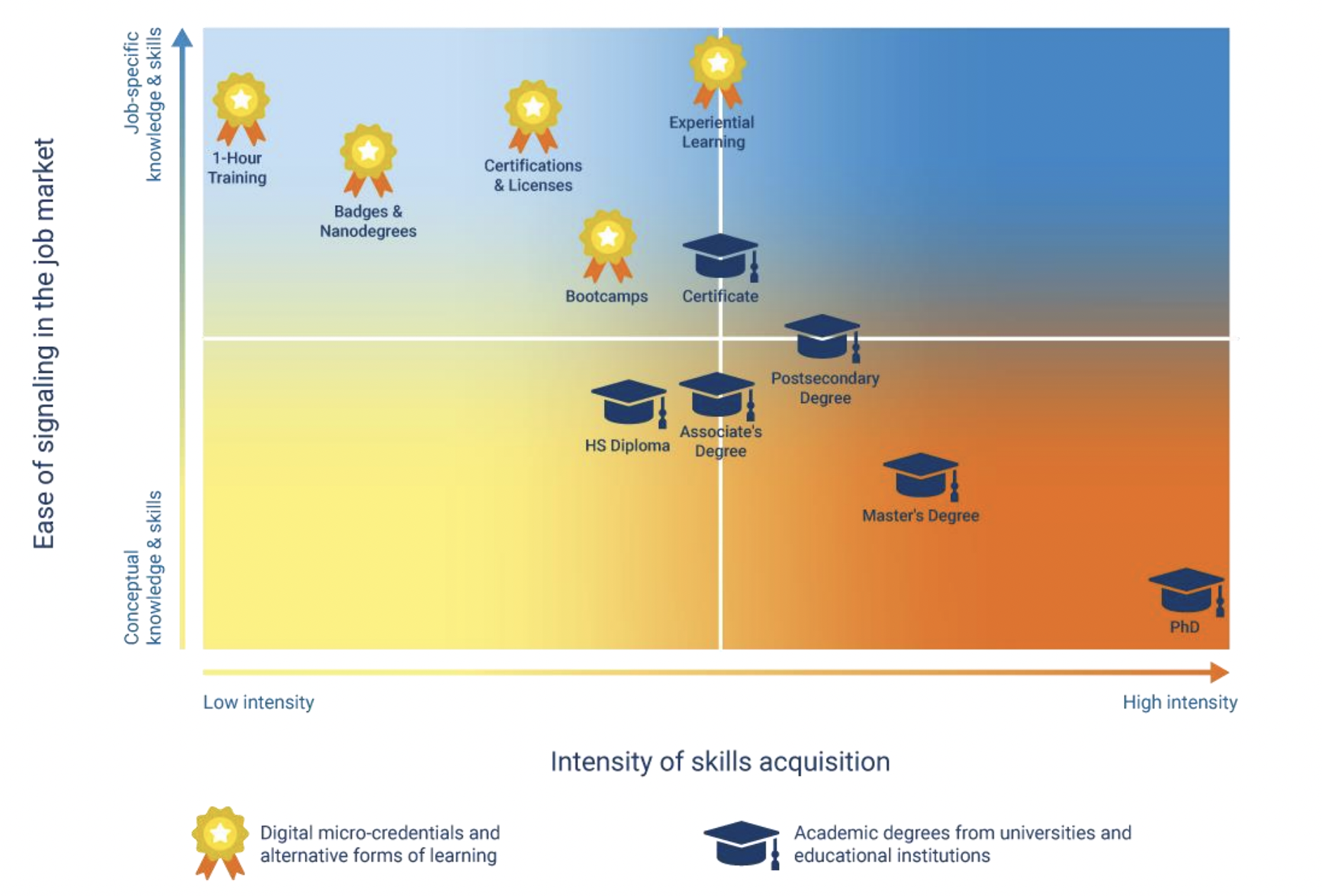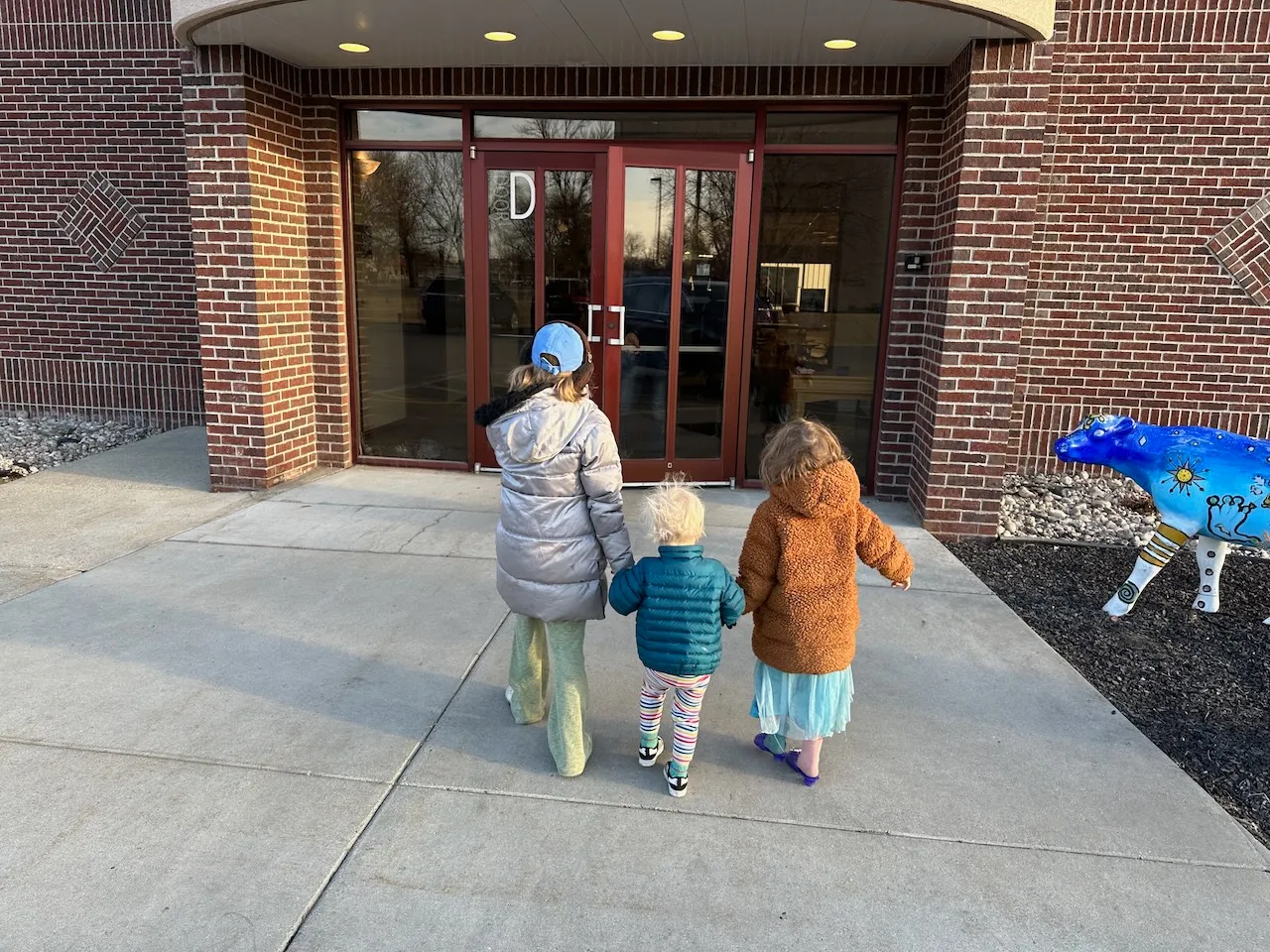The Education Evolution: From Ed1 to Ed3
The Internet personalized the world we live in. Education is going through the same evolution with Ed3.

Table of Contents
You can listen to this article below. Subscribe here or on your favorite podcast player.
The Internet revolution is underestimated.
Just a few short years ago, we watched the same television shows at the same time; we read the same magazines; the websites we visited were the same for everyone.
The Internet changed everything by personalizing the world we live in.
We can discover and watch niche television shows on demand; we can curate our own "magazines" with the authors and sources we like; every Facebook feed and Amazon homepage is unique to every single user.
The Internet revolutionized what we read, watch, think and share. Now, it is revolutionizing education.
In many ways, education is similar to the pre-Internet world.
We go to a school and take the classes that they are offered when they are offered; we learn from the instructors employed by the institutions we attend; we credential academic experiences while ignoring learning outside of the classroom.
The culmination of this pre-Internet mindset is that we think of education as something we do when we are young instead of a lifelong activity.
The Internet has evolved. Today, education is joining this evolution.
The Internet Evolution: Web1 to Web3
The Internet has gone through four distinct evolutions, resulting in the personalization of our online experiences.

Internet
The journey begins with the creation of the wires that created networks of computers. These connected machines were the Internet, but there wasn't much to do on the Internet.
Web1 - Read
Web1 was the creation of World Wide Web, where we could read information. A newspaper article could be read online. The stock ticker could be viewed. We could even start to send emails (often the length of an old-school letter).
Web2 - Read/Write
Web2 was the ability to write and share our own ideas. Suddenly we could post on social media sites and have our ideas shared with the world. This information was most often sent to a centralized company who technically owned the information and would use it to sell ads.
Web3 - Read/Write/Own
Web3 is the new era of the World Wide Web where users can own their information and use it to collaborate with others. An intermediary is not needed to guarantee trust thanks to blockchain technologies. When we use our digital wallet, we enjoy personalized experiences from personalized websites to access to communities to tickets to in-person events.
Web3 is the internet owned by the builders and users, orchestrated with tokens. - Packy McCormick, Not Boring
The Internet has moved into the new, personalized era of Web3. Education is not far behind. We are now entering the world of Ed3.
The Education Evolution: Ed1 to Ed3
Education is going through a similar evolution as the Internet.
ed1: learn
— Scottdavidmeyer.eth 🌻 (@MrScottMeyer) December 7, 2021
ed2 : learn / teach
ed3: learn / teach / own https://t.co/HGQDYnmW75
Ed1 - Learn
The Ed1 model is the one we are most familiar with. We learn information in a specific time and place, usually from a professional instructor. This is the teacher in the classroom or on a live Zoom call common in K-12 and higher education.
One learning experience is created for everyone, with natural limits on the scale of the classroom. Often the same instructor teaches multiple topics, even if they are outside of their core expertise. These experiences are created based on prescriptive paths and most often credentialed by the institutions that deliver the learning and employ the instructor.
Ed2 - Teach
Ed2 democratizes teaching and distributes learning.
In Ed2, anyone can be a teacher. You can upload a lesson to Skillshare or YouTube on any topic you are passionate about.
Learning is freed from time and place and distributed globally. We can login to sites like Coursera or edX based on our schedule from anywhere in the world. We can move through the course at our own speed and combine learning experiences that interest us.
The Ed2 learning experiences are centralized on a platform, often academic in nature, and sometimes credentialed by the platform. These credentials can occasionally be transferred to an educational institution for credit, but it has to fit the prescribed learning paths from the Ed1 world.
Ed3 - Own
Ed3 unlocks ownership and personalization.
Ownership
In the Ed3 world, students have a digital wallet or backpack where they can store their experiences. These could be learning experiences from the classroom as well as learning experiences outside of the classroom from jobs, internships, projects, co-curricular activities, and more. Because students can validate and demonstrate the knowledge from these experiences, an intermediary - such as a registrar - is not needed to stamp the credential. This trustless collaboration means any learning experience can be added to the backpack and shared when the student wants to share it. In this way, the student owns their credential and controls access to it. No fees or calls to an institution required.
Personalization
Ed3 becomes even more powerful as we think of education as a lifelong activity. Students continually pursue topics that interest them, building a living portfolio that they control.
This portfolio can be used to unlock personalized experiences and opportunities:
- If a student developed leadership as an Eagle Scout, they could join a national club or attend a conference.
- If a student attended a few semesters of college, they could show employers their progress and what they learned to so they would earn more than an employee without any education.
- If a student demonstrated coding skills, they could jump straight to the graduate level computer science course, create their own major, or apply for a job at a tech company.
- If an alumni could show they graduated from a specific institution, they might receive tickets to the homecoming football game or an invitation to the alumni trip to Europe.
In short, Ed3 is tech-enabled personalized learning.
The Growing Ed3 Movement
I first started to explore Ed3 in From Web3 to Ed3. At the time, I thought I had invented the term Ed3: web3 + education = ed3. I knew I wanted to focus on the topic, so I even named my business after it!
I then discovered an entire ecosystem working on the opportunity. Borden called it Education 3.0, the Learning Economy referred to it as The Internet of Education. A shared vision and set of protocols were being developed and discussed by distributed groups like Ed 3.0 and the Ed3DAO, as well as more formalized organizations like WC3, IEEE, and more.
As the Brookings Institute noted in their recent whitepaper, additional participants include higher education, private, and for-profit organizations:

It is clear from all of these efforts that the Ed3 movement is growing.

The Ed3 Adoption Curve
Ed3 is already impacting education. The green shoots of this new era are present.
Thanks to its ethos of composability - where projects can be reused, remixed, and repurposed - the speed at which Ed3 is adopted will be exponentially greater than the shift from Ed1 to Ed2.
Currently, as this Brookings Institute image shows, innovation is occurring in low intensity, short experience that are job specific:

From the hiring side, Decentralized Autonomous Organizations, or DAOs, are already hiring employees based on their verified activity on the blockchain - basically their Ed3 credential. Dework is a great example aggregating bounties - or job opportunities - that anyone with verified experience could apply for.
Expect Web3 native organizations and companies to be the first domino in Ed3 adoption, followed by companies in competitive talent markets, like tech companies. As these industries normalize Ed3 credentials, other industries will follow suit.
How to Get Started with Ed3
Sustaining the momentum of Ed3 will require builders from all backgrounds. Ed3 needs to be built in an inclusive way. As it truly globalizing learning, a global perspective will help create the best version of Ed3.
That's where you come in. There are a few easy ways to get started with the Ed3 movement, following the stages of educations evolution.
Learn
- Learn more about Web3 - the foundation for Ed3 - with the Web3 Starter Pack, created by CCS, the original education DAO.
- Join the Ed3DAO. This organization built by educators for educators is working to onboard 100,000+ educators to Web3.
Teach
- Attend an Ed 3.0 meeting to add your perspectives on the protocols and communities needed to build the movement.
- Use our Crypto Curriculum to teach your students about Web3.
- Create articles or videos on your Ed3 experiements and share articles like this with your network to help reach more people. Tag me on Twitter so I can amplify!
Own
- Create a digital wallet using a tool like Metamask so you can learn about the future of personalized learning and credentialing.
- Visit Rabbithole to learn Web3 skills and build your Ed3 credential.
A Personalized Education for All
Ed3 will promote education as a lifelong activity, as customized to you as your Facebook feed or Netflix homepage.
Your personalized learning path will uncover professional opportunities and new interests you may want to pursue. Ed3 can truly change how you interact with both the physical and virtual world.
Ed3 is tech-enabled personalized learning. It is the next evolution of education.
I hope you'll join me and continue to explore what is possible in this personalized world.
Scott David Meyer Newsletter
Join the newsletter to receive the latest updates in your inbox.



